Edited by Andrew Roberts
Trumpington’s history in the 17th century, including the Civil War and the rebuilding of Anstey Hall. One of a series of pages with Trumpington’s timeline.
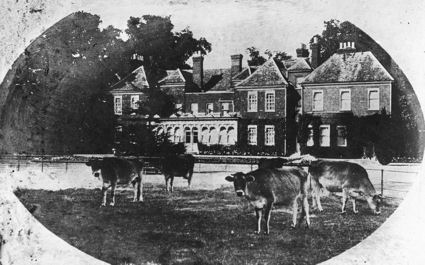
17th century
Cambridgeshire was a predominantly arable county, one of the last in England to be enclosed. The main crop was corn, including barley for the London food market and for malt for brewing, with grassland on heavier clay soils. Unlike Essex, Suffolk and Norfolk, there was no industry. There was a relative lack of prosperity, with few great houses and most parishes limited to one or two minor gentlemen.
Sources of information: Evans, Nesta and Rose, Susan (2000). Cambridgeshire Hearth Tax Returns, Michaelmas 1664. London: British Record Society. Pages xix-xxii, xxx-xxxiv.
Early 17th century
The Coach & Horses public house: the original two storey building, dating from the early 17th century, was timber-framed and plastered, with a tiled roof, attics and cellars.
Sources of information: The Victoria History of the Counties of England (1982). A History of Cambridgeshire and the Isle of Ely, Volume VIII. Armingford and Thriplow Hundreds. Trumpington, page 250.
Local History Group web page: The Coach & Horses; Evolution of Trumpington village.
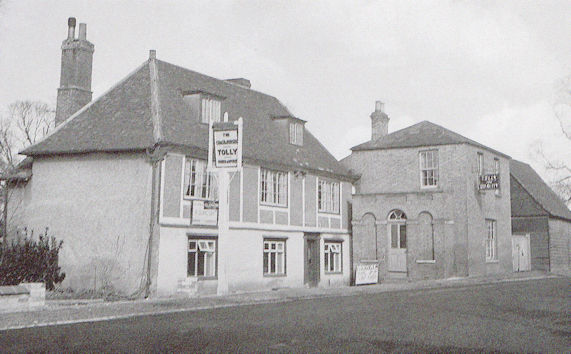
1610
Completion of work to alter the line of the stream on the eastern side of the village, including Vicar’s Brook, to form Hobson’s Brook, running from Nine Wells through Trumpington to Hobson’s Conduit, providing a water supply into Cambridge. In 1610, Thomas Chaplyn [Chaplin], the Lord of the Manor of Trumpington, signed a “tripartite agreement” with the town and the university giving them rights over the newly made watercourse.
Sources of information: Bushell, W.D. (1938). Hobson’s Conduit. The New River at Cambridge Commonly Called Hobson’s River. Gray, E.A. (1977). Hobson’s Conduit, the Story of a Cambridgeshire Chalk Stream. The Victoria History of the Counties of England (1959). The History of the County of Cambridge & the Isle of Ely. Volume III. The City and University of Cambridge, Public Health, page 102-03. The Victoria History of the Counties of England (1982). A History of Cambridgeshire and the Isle of Ely, Volume VIII. Armingford and Thriplow Hundreds. Trumpington, pages 249, 252.
Local History Group web pages: Introduction to Hobson’s Brook and Hobson’s Conduit. Hobson’s Conduit: the First 400 Years.
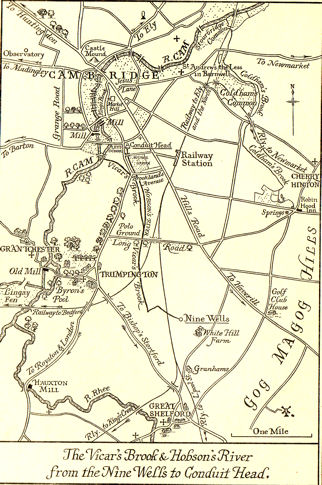
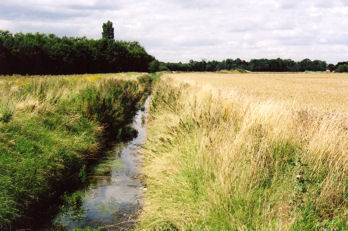
1637
The Thompson family acquire Anstey Hall, owned by Thompson’s from 1637-1748.
Sources of information: Pevsner, Nicholas (1970). Cambridgeshire. The Buildings of England.
Local History Group web pages: The Manors of Trumpington; Evolution of Trumpington village.
1642-48
Cambridgeshire supported Parliament during the Civil War and the countryside was a Puritan stronghold although there was little military action. In 1647, King Charles I came to Trumpington while held as a prisoner of the army, staying at Hinchinbrooke and Childerley.
Sources of information: Kirby, Tony and Oosthuizen, Susan (eds.) (2000). An Atlas of Cambridgeshire and Huntingdonshire History . Cambridge: Anglia Polytechnic University. Map 53. The Victoria History of the Counties of England (1959). The History of the County of Cambridge & the Isle of Ely. Volume III. The City and University of Cambridge. Modern History, page 17-19.
1643/44
Destruction of religious imagery during the Civil War: William Dowsing (1596-1668) was appointed by the Earl of Manchester as Commissioner for removing the monuments to idolatry and superstition from churches in Cambridgeshire and Suffolk. He was appointed in December 1643 and visited 250 churches and chapels in 1643-44, including Trumpington Parish Church on 5 March 1643/44: “March 5, Trumpington, 3 superstitious pictures, the steps to be levelled, which Mr Thomson, to whom we gave order to do it, refused.” The brass to Sir Roger had already lost its marginal inscription before Dowsing’s visit.
Sources of information: Cooper, Trevor (2001). The Journal of William Dowsing. Iconoclasm in East Anglia during the English Civil War.
1650s
Construction of houses near the Church, including ‘Dated Cottage’ (18 Grantchester Road), which is said to date from 1654. This date was on a plaque on its frontage in the 1950s.
Local History Group web page: Brian Goodliffe’s recollections of living in Trumpington in the 1950s; Evolution of Trumpington village.
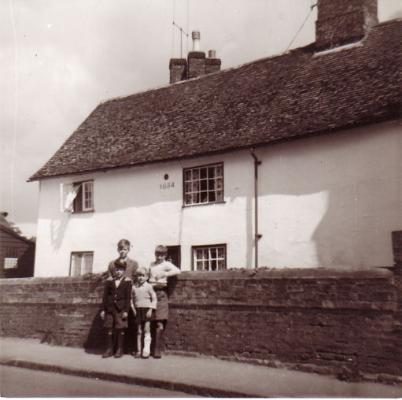
1653
The first coach service from Cambridge to London.
Sources of information: The Victoria History of the Counties of England (1959). The History of the County of Cambridge & the Isle of Ely. Volume III. The City and University of Cambridge. City of Cambridge, page 1.
1660s-1670s
Building of the current Anstey Hall, incorporating a 16th century house. Owned by the Thompson family 1637-1748; the Anstey family, 1748-1838; and the Foster family, 1838-1941.
Sources of information: Pevsner, Nicholas (1970). Cambridgeshire. The Buildings of England. The Victoria History of the Counties of England (1982). A History of Cambridgeshire and the Isle of Ely, Volume VIII. Armingford and Thriplow Hundreds. Trumpington, page 267.
Local History web pages: Visit to Anstey Hall, 15 May 2012; Visit to Anstey Hall, 22 May 2025.
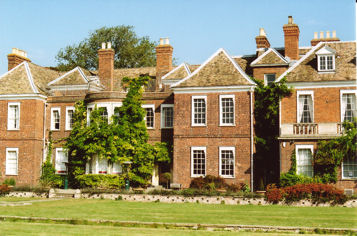
1661
Isaac Newton a student at Trinity College; appointed Lucasian Professor in 1669.
1662-89
A national Hearth Tax was introduced in 1662 and abolished in 1689, collected half-yearly at the rate of 1s for each hearth in the homes of all but poor families. The Hearth Tax assessments consisted of lists of persons and the number of hearths. The records for Cambridgeshire survive at The National Archives from 1662-66 and 1669-74. For Trumpington:
the Michaelmas 1662 list has 57 entries referring to 145 hearths;
the Michaelmas 1664 list has 67 entries for 157 hearths;
the Lady Day 1666 list has 64 entries and 151 hearths;
the Lady Day 1674 list has 65 entries for 167 hearths.
The majority of the entries in these four lists are for properties with 1 hearth. At the other extreme, there is one property consistently listed with 16 hearths, occupied by James Whitlock Gent in 1664 (‘Trumpington Hall’, where Mary Pychard had married James Whitelocke in 1657). The second highest property varies between 9 and 13 hearth and probably refers to Anstey Hall, as James Tompson Gen was the occupier of the 13 hearth entry in 1664 (‘Anstey Hall’, where John Bacchus had sold Huntingdons to James Thompson in 1637). There was a 9 hearth property occupied by John Baron Gen in 1664 (Thomas Chaplyn sold his manor to John Baron in 1615).
Sources of information: Evans, Nesta and Rose, Susan (2000). Cambridgeshire Hearth Tax Returns Michaelmas 1664. London: British Record Society. Pages lxxviii and 305-06. Kirby, Tony and Oosthuizen, Susan (eds.) (2000). An Atlas of Cambridgeshire and Huntingdonshire History. Cambridge: Anglia Polytechnic University. Map 48. The Victoria History of the Counties of England (1959). The History of the County of Cambridge & the Isle of Ely. Volume III. The City and University of Cambridge. Hearth Tax Assessments, page 500. The Victoria History of the Counties of England (1982). A History of Cambridgeshire and the Isle of Ely, Volume VIII. Armingford and Thriplow Hundreds. Trumpington, pages 252-55.
Local History Group web pages: Evolution of Trumpington village.
1667
The location and date of origin the White Lion public house is unknown, but it was recorded in 1667 and 1764.
Sources of information: The Victoria History of the Counties of England (1982). A History of Cambridgeshire and the Isle of Ely, Volume VIII. Armingford and Thriplow Hundreds. Trumpington, page 250.
Local History Group web page: The White Lion public house.
1675
The Pemberton family became owners of Trumpington Hall when Sir Francis Pemberton (bap. 1624, d. 1697) purchased the manor of Trumpington from the heirs of the Pychard or Pitcher family. Sir Francis was a leading judge who was knighted in 1675 and made a Privy Councillor and Chief Justice of Common Pleas in 1682-83.
Sources of information: Halliday, Paul D. (2008). ‘Pemberton, Sir Francis (bap. 1624, d. 1697)’, Oxford Dictionary of National Biography. The Victoria History of the Counties of England (1982). A History of Cambridgeshire and the Isle of Ely, Volume VIII. Armingford and Thriplow Hundreds. Trumpington, page 253.
Local History Group web page: Trumpington Hall and the Pemberton Family.; The Manors of Trumpington; Evolution of Trumpington village.
1675
The national road network was developing, including the route from London to King’s Lynn. John Ogilby published Britannia, with 100 strip maps showing routes from one part of the country to another. Route 43 is from Puckridge to Cambridge and King’s Lynn, including the journey through Trumpington. Approaching from the south, the road goes past ‘Hawkston’, ‘Has… mill’ and a ‘hawthorn tree’ with an ‘open way on each side’. Between Trumpington and Cambridge, it continues through ‘arrable land’, ‘pasture’, ‘open way on each side’ and into Cambridge.
Sources of information: John Ogilby‘s Britannia, 1675 (reproduction of 1939 facsimile). Kirby, Tony and Oosthuizen, Susan (eds.) (2000). An Atlas of Cambridgeshire and Huntingdonshire History. Cambridge: Anglia Polytechnic University. Map 46.
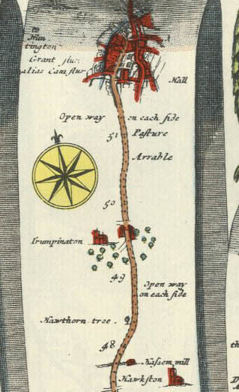
1676
The Compton Religious Census was carried out across the country, with questions about the number of persons in each parish. Southern Cambridgeshire was one of the centres of religious dissent. There were 10 or more dissenters in Trumpington, which was part of a Congregational Circuit.
Sources of information: Kirby, Tony and Oosthuizen, Susan (eds.) (2000). An Atlas of Cambridgeshire and Huntingdonshire History. Cambridge: Anglia Polytechnic University. Map 51.
1676-
Building of Wren Library, Trinity College.
1679
William Austin left a bequest for four poor children to be taught free of charge until they could easily read the Bible. There is a plaque to commemorate his bequest in the Parish Church.
Sources of information: The Victoria History of the Counties of England (1982). A History of Cambridgeshire and the Isle of Ely, Volume VIII. Armingford and Thriplow Hundreds. Trumpington, page 266.
Local History Group web page: Education and schools in Trumpington.
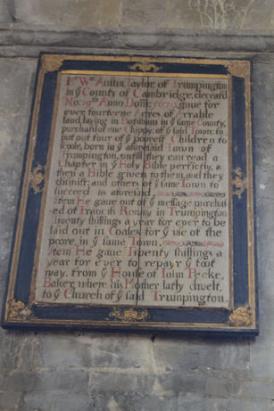
1681
Thomas Allen bequest for four boys to be apprentices. There is a plaque to commemorate his bequest in the Parish Church.
Sources of information: The Victoria History of the Counties of England (1982). A History of Cambridgeshire and the Isle of Ely, Volume VIII. Armingford and Thriplow Hundreds. Trumpington, page 267.
Local History Group web page: Education and schools in Trumpington.
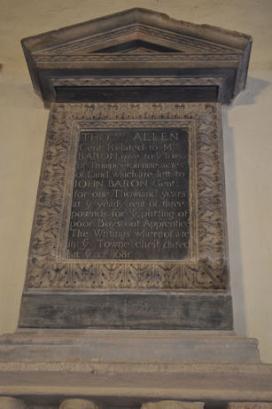
1686
The Black Swan public house appears in records dated 1686 and 1704 and was almost certainly on the High Street.
Sources of information: The Victoria History of the Counties of England (1982). A History of Cambridgeshire and the Isle of Ely, Volume VIII. Armingford and Thriplow Hundreds. Trumpington, page 250.
Local History Group web page: The Black Swan public house.
1697
Death of Sir Francis Pemberton, buried in Highgate Chapel. Sir Francis’s memorial was moved to the Parish Church when the chapel was demolished in 1833.
Sources of information: Halliday, Paul D. (2008). ‘Pemberton, Sir Francis (bap. 1624, d. 1697)’, Oxford Dictionary of National Biography. Ambrose, Tom (2006). St Mary & St Michael Trumpington. p. 8-9.
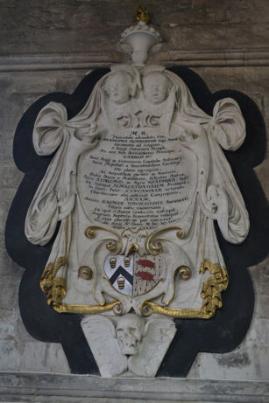
Local History Group web pages: The Manors of Trumpington; Evolution of Trumpington village.